
Brachionidium is a genus of about 72 species of orchids, found throughout much of tropical America. The generic name comes from Greek and refers to the protrusions on the stigma.

Brassavola cucullata, common name daddy long-legs orchid, is a species of orchid native to Mexico, Central America, the West Indies and northern South America.

Brassavola venosa is a species of orchid found from Campeche, Oaxaca, Quintana Roo, El Salvador, Guatemala, Honduras and Nicaragua.
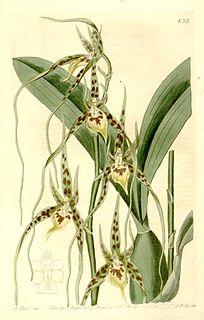
Brassia caudata is a species of orchid. It is found widespread across the warmer parts of the Western Hemisphere, reported from southern Mexico, Central America, southern Florida, Greater Antilles, Trinidad, northern South America. It is also known by the common names tailed Brassia, spider orchid and cricket orchid.

Brassia maculata, the spotted brassia, is a species of orchid. It is native to southern Mexico, Central America, Cuba, and Jamaica.
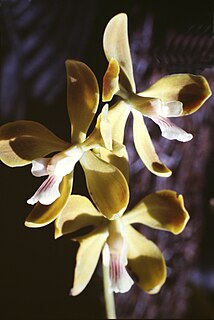
Encyclia diurna is a species of orchid.
Uleiorchis is a genus of myco-heterotrophic flowering plants from the orchid family, Orchidaceae. There are two known species, native to Central and South America.
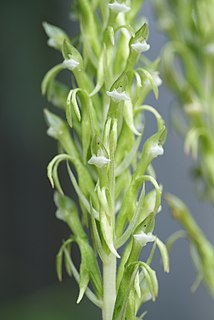
Pelexia is a genus of flowering plants from the orchid family, Orchidaceae. It has about 60-70 accepted species, native to Latin America, the West Indies and Florida.
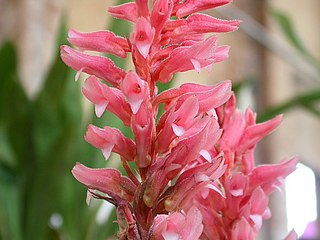
Sacoila is a genus of flowering plants from the orchid family, Orchidaceae, native to the Western Hemisphere. It occurs in Mexico, Central America, South America, the West Indies and Florida.

Sarcoglottis is a genus of flowering plants from the orchid family, Orchidaceae. It is widespread across much of Latin America from Mexico to Argentina, with one species extending northward into Trinidad and the Windward Islands.

Bletia purpurea, common name pine-pink or sharp-petaled bletia, is a species of orchid widespread across much of Latin America and the West Indies, and also found in Florida. They are terrestrial in swamps or sometimes found growing on logs or stumps above the high tide mark.
Tropidia polystachya, the young palm orchid, is a species of orchid native to Mexico, Central America, Greater Antilles, Bahamas, Cayman Islands, Florida, Colombia, Venezuela, and Ecuador.
Dendrophylax porrectus, the jingle bell orchid, or needleroot orchid, is a species of epiphytic orchid native to Mexico, El Salvador, Guatemala, Florida, Cayman Islands, Cuba, Hispaniola, Jamaica, and Puerto Rico.
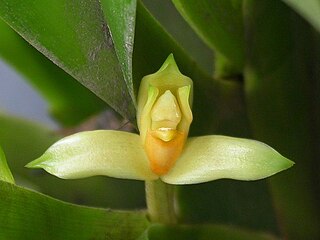
Heterotaxis is a genus of orchids native to Latin America from central Mexico to Bolivia, and also to parts of the West Indies. One species extends into Florida.
- Heterotaxis brasiliensis(Brieger & Illg) F.Barros - Brazil
- Heterotaxis discolor(Lodd. ex Lindl.) Ojeda & Carnevali - Belize, Nicaragua, Venezuela, the Guianas, Bolivia, Brazil, Bolivia, Peru, Ecuador
- Heterotaxis equitans(Schltr.) Ojeda & Carnevali - Venezuela, Suriname, Guyana, Bolivia, Brazil, Bolivia, Peru, Ecuador
- Heterotaxis fritziiOjeda & Carnevali - Ecuador
- Heterotaxis maleolens(Schltr.) Ojeda & Carnevali - Chiapas, Central America
- Heterotaxis microiridifolia(D.E.Benn. & Christenson) Ojeda & Carnevali - Peru
- Heterotaxis santanae(Carnevali & I.Ramírez) Ojeda & Carnevali - Brazil, Ecuador, Venezuela
- Heterotaxis schultesiiOjeda & G.A.Romero - Brazil, Colombia
- Heterotaxis sessilis(Sw.) F.Barros - widespread from Veracruz and Florida south to Brazil
- Heterotaxis superflua(Rchb.f.) F.Barros - Brazil, Venezuela, the Guianas, Bolivia, Ecuador, Peru
- Heterotaxis valenzuelana(A.Rich.) Ojeda & Carnevali - Central America, Cuba, Venezuela, Colombia, Ecuador, Brazil
- Heterotaxis villosa(Barb.Rodr.) F.Barros - Brazil, Venezuela, the Guianas, Bolivia, Ecuador, Peru, Colombia
- Heterotaxis violaceopunctata (Rchb.f.) F.Barros - Brazil, Venezuela, the Guianas, Ecuador, Peru, Colombia

Heterotaxis sessilis is an epiphytic orchid widespread across the West Indies, Central America, southern Mexico, Florida and northern South America. Hidden orchid is a common name.

Mapinguari is a genus of orchids native to Central America and northern South America.
- Mapinguari auyantepuiensis(Foldats) Carnevali & R.B.Singer - Guyana, Suriname, Venezuela, Peru, Brazil
- Mapinguari desvauxianus(Rchb.f.) Carnevali & R.B.Singer - The Guianas, Venezuela, Colombia, Ecuador, Peru, Brazil
- Mapinguari foldatsianus(Carnevali & I.Ramírez) Carnevali & R.B.Singer - Guyana, Venezuela
- Mapinguari longipetiolatus(Ames & C.Schweinf.) Carnevali & R.B.Singer - Costa Rica, Panama, Venezuela, Colombia, Ecuador, Peru
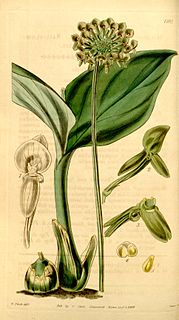
Malaxis histionantha is a species of orchid native to Latin America. It is widespread from Mexico to Argentina. It generally has two leaves and a more or less spherical cluster of small green flowers.
Pleurothallis transversilabia is a species of orchid plant native to Venezuela.
Pleurothallis loreae is a species of orchid plant native to Venezuela.
Pleurothallis stellata is a species of orchid plant native to Venezuela.













